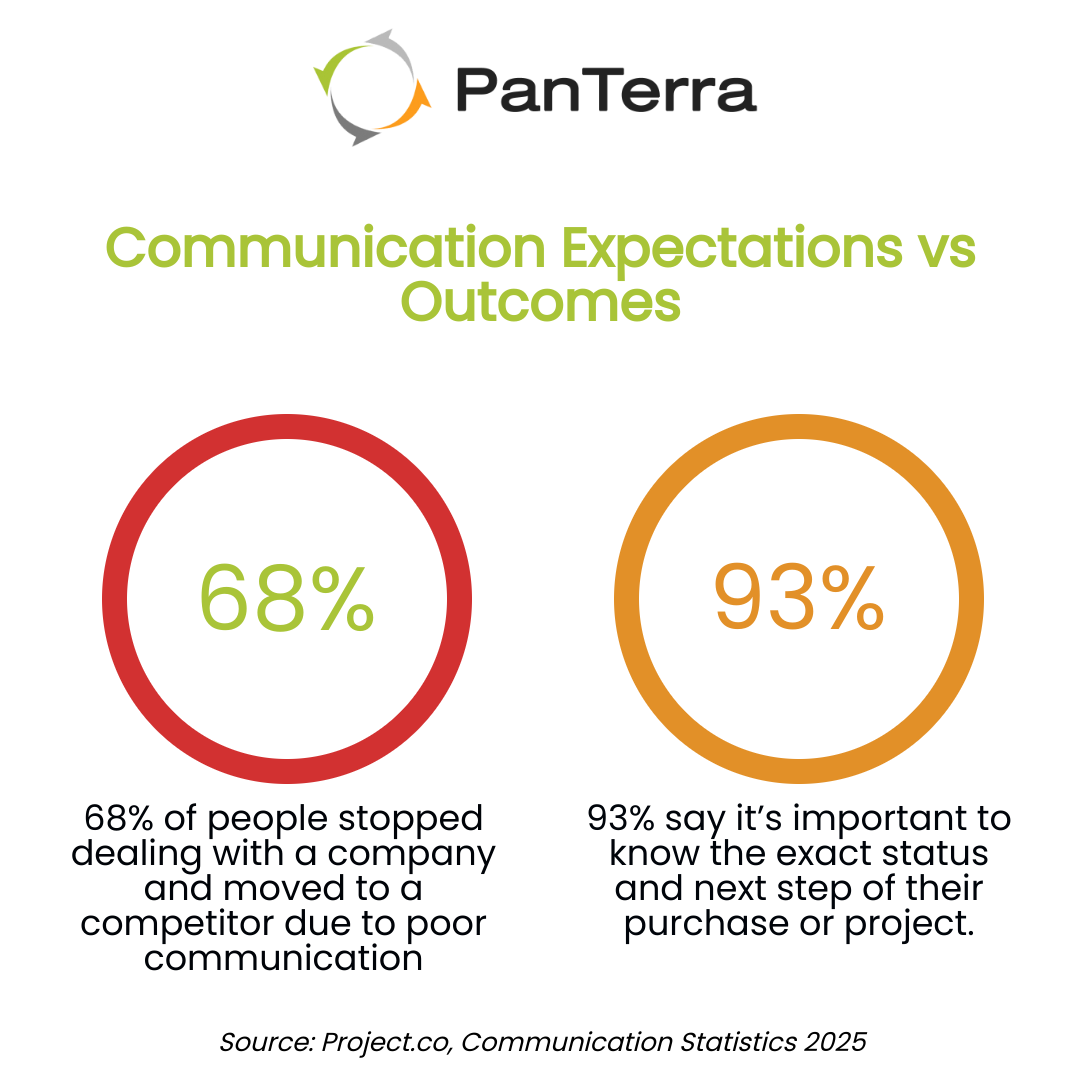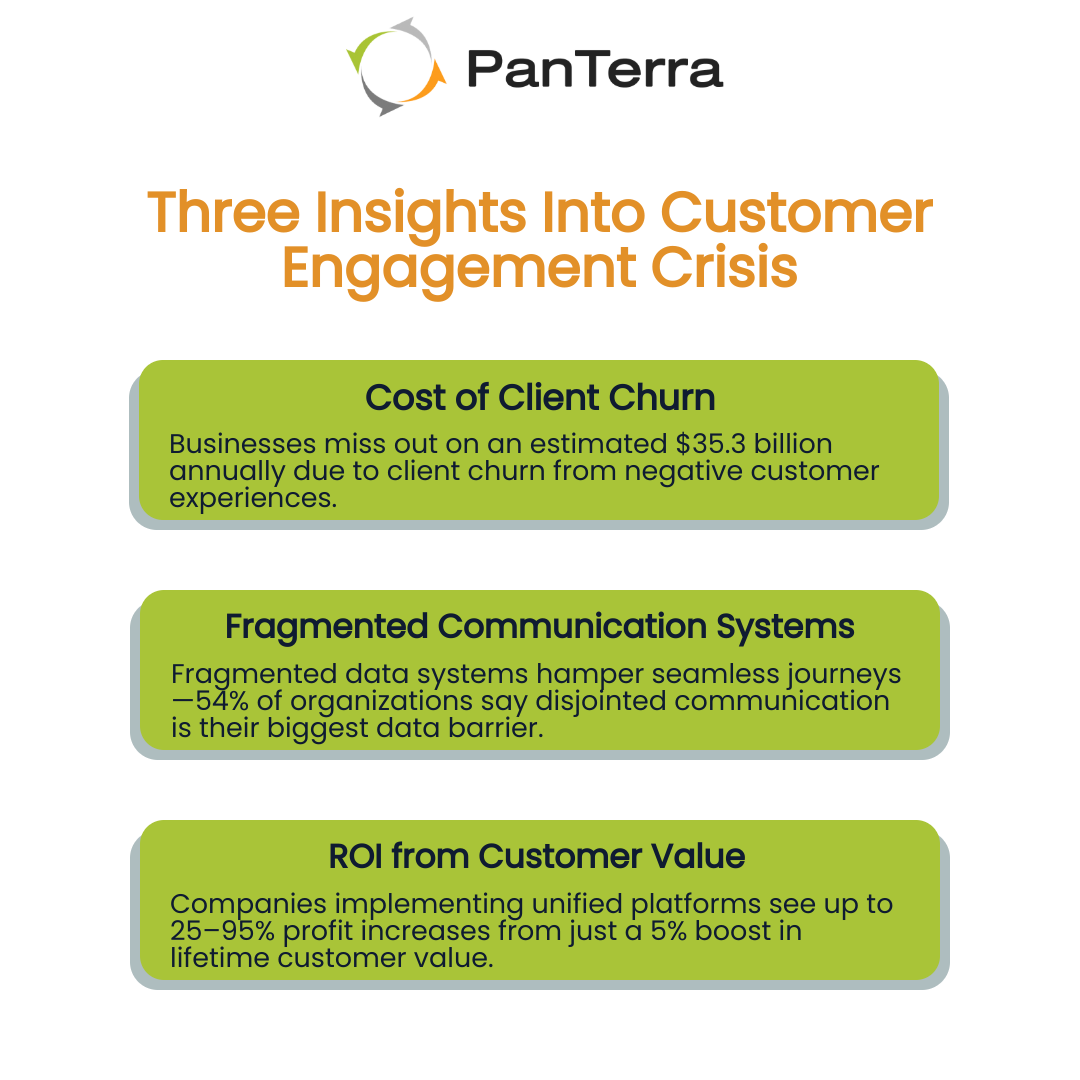Customer Engagement Tools That Drive Real Connections for Small Businesses
September 17, 2025

I’ve seen what happens when customer communication breaks down. On the surface, everything looks fine: multiple apps, a CRM, even a help desk tool.
But when a real customer calls, the cracks appear: agents juggling logins, conversations scattered, clients left repeating themselves. Strategy in the boardroom feels like chaos in real life.
And the cost is real. Businesses lose billions every year to churn caused by poor experiences and fragmented systems that keep them from using customer data effectively.
The upside of that is that even small gains in retention, just 5%, can translate into major profit growth.
That’s why the shift to unified platforms matters: by bringing every touchpoint into one single place, business communication systems turn frustration into loyalty and help businesses deliver the seamless journeys customers already expect.
Why Small Businesses Need Better Customer Engagement Tools Now
Small businesses face a critical challenge in 2025. Customers expect immediate, personalized interactions across multiple channels, and meeting these expectations determines whether a business survives.
Project.co reports 68% of people have abandoned companies because of poor communication. For small businesses, the stakes are high.
What’s the Real Cost of Fragmented Customer Communication?
Businesses lose an estimated $4.7 trillion globally each year due to poor experiences. For small businesses with limited resources, even minor customer losses create significant setbacks.
Communication breakdowns cause ripple effects throughout operations. About 31% of professionals have experienced lost files due to communication issues, as Project.co reveals.
Small businesses particularly feel this pain when juggling multiple platforms. Each disconnected tool creates another opportunity for messages to slip through cracks.
Customer information in separate systems makes personalization virtually impossible.
How Traditional Phone Systems Hold Businesses Back
Legacy phone systems create unexpected barriers to growth. Their limited integration capabilities keep customer data isolated from other business systems.
Traditional PBX systems also carry hidden communication costs that strain small business budgets. Beyond visible hardware expenses, these systems require ongoing maintenance and specialized IT knowledge. As businesses grow, these systems struggle to scale.
Most critically, traditional systems lack modern engagement features like AI-powered video conferencing and team messaging
The Unified Communications Advantage
Customer engaging communication platforms eliminate silos by integrating multiple channels. They create consistent experiences regardless of how customers connect.
Solutions like Streams.AI enable better analytics by capturing interaction data across channels.
We've seen small businesses gain visibility into customer journeys, identifying service improvement opportunities. With real-time insights, teams respond proactively rather than reactively.
Brands using multi-channel communication strategies build stronger loyalty. The scalability of cloud-based tools makes them particularly valuable for growing businesses.
This flexibility lets small companies compete with larger enterprises without matching IT budgets.

Customer Engagement Tools Your Business Actually Needs
When selecting a customer engagement platform, looking beyond flashy feature lists makes all the difference.
Businesses succeed by prioritizing three core elements.
- Measurable ROI,
- Seamless integration capabilities
- Scalability for growth
Many teams get distracted by advanced features they rarely use in practice.
Instead, focus on tools that solve your specific communication challenges. Consider how each solution fits into your existing communication service models.
Change management often determines implementation success. Your staff needs proper training to maximize adoption rates.
ROI Over Features Every Time
ROI calculation begins with establishing clear baseline metrics.
Track customer retention rates, support resolution times, and team productivity before making changes. After implementation, measure improvements against these initial benchmarks.
Customer lifetime value actually provides the clearest picture of tool effectiveness. A 5% increase in retention can boost profits by 25-95%, according to Bain Company research.
Productivity gains often justify the investment alone. Staff using integrated tools typically save 15-20 minutes daily on manual tasks.
5 Essential Integration Capabilities
Successful engagement platforms connect seamlessly with existing systems. Here are 5 integration capabilities that deliver meaningful business impact:
- Connect with CRM systems to centralize customer records within communication threads. CRM integration benefits include faster resolution times and more personalized service experiences.
- Preserve phone investments while adding modern capabilities to your communication stack.
- Support mobile teams with tools identical to office-based systems, to create consistent customer experiences regardless of where your staff works from.
- Extend functionality through third-party app connections without custom development.
- Eliminate information silos through reliable data synchronization across platforms. Customer engagement automation works best when all systems share accurate, up-to-date information.
Real-Time Analytics That Actually Matter
Actionable insights matter more than overwhelming data dashboards.
Customer interaction tracking should highlight patterns across channels, revealing engagement strengths and weaknesses.
Rising customer expectations make response time analytics increasingly valuable. Modern solutions provide contact center analytics that measure average response times while identifying peak demand periods.
Beyond the Customer Engagement Tools Checklist
Throughout our work guiding companies through communication transformations, we've observed a common pattern: organizations that view platforms as magic solutions often fail to achieve their engagement goals.
Success actually requires strategic implementation that aligns technology with customer needs and business processes.
Tools alone rarely create loyalty; customer experience matters more than specific technologies.
What truly drives engagement? Execution, integration, and consistent delivery across touchpoints.
With integrated platforms, teams can access complete relationship histories. They respond faster and deliver personalized service that builds emotional connections with buyers.
Your Next Steps to Better Customer Engagement
Begin with a communication audit of your current stack.
- Identify gaps, overlaps, and integration challenges that create disconnected experiences.
- Map how information flows between systems and where breakdowns occur.
Then, take one step forward.
Start with a department or process where communication pain is most visible. Proving the concept in a small area creates momentum and makes adoption smoother across the organization.
Most importantly, keep the focus on people, not just platforms. The right technology should free your team to respond faster, connect more personally, and deliver the kind of experiences customers remember.
Giving teams real-time visibility, and customers the seamless journey they expect, changes everything. And growth comes faster when everything is up and running in one day.

.jpg?width=500&height=500&name=Are%20you%20Getting%20a%20Good%20Deal%20(1).jpg)
Comments